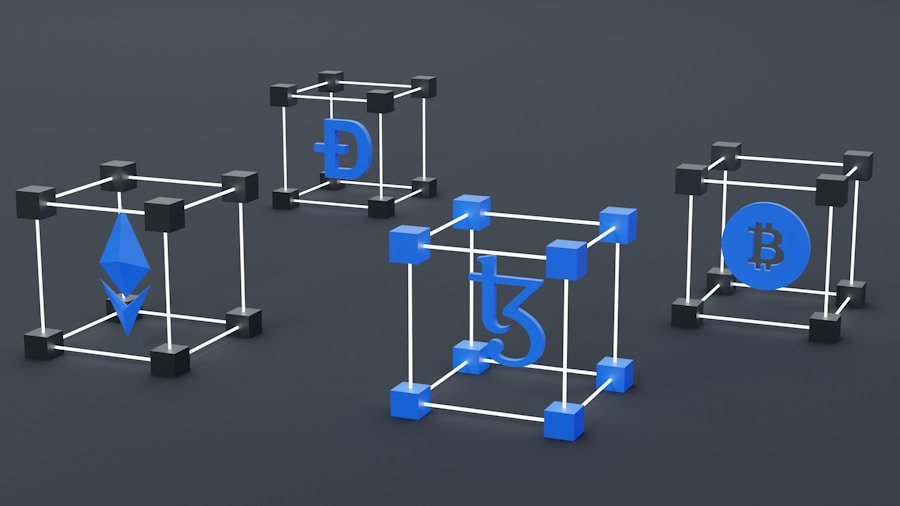Blockchain technology is a decentralized, distributed ledger system that records transactions across multiple computers in a way that is secure, transparent, and tamper-proof. Each block in the chain contains a cryptographic hash of the previous block, a timestamp, and transaction data. Once a block is added to the chain, it cannot be altered without altering all subsequent blocks, making it virtually impossible to tamper with the data. This makes blockchain technology an ideal solution for securing user data, as it provides a high level of transparency and security.
Blockchain technology is often associated with cryptocurrencies like Bitcoin, but its potential applications extend far beyond digital currencies. It has the potential to revolutionize the way data is stored and secured, making it an attractive option for businesses and organizations looking to enhance their security measures. By understanding the fundamentals of blockchain technology, businesses can leverage its capabilities to protect user data and build trust with their customers.
The Benefits of Blockchain for User Data Security
One of the key benefits of using blockchain technology for user data security is its decentralized nature. Traditional data storage methods rely on a central authority to manage and secure the data, making them vulnerable to hacking and unauthorized access. In contrast, blockchain technology distributes data across a network of computers, making it much more difficult for hackers to compromise the system. This decentralized approach to data storage enhances security and reduces the risk of data breaches.
Another benefit of blockchain technology for user data security is its transparency. Every transaction recorded on the blockchain is visible to all participants in the network, creating a high level of transparency and accountability. This transparency helps to build trust between users and businesses, as it provides a clear record of all transactions and interactions. Additionally, the immutability of the blockchain ensures that once data is recorded, it cannot be altered or deleted, providing a high level of data integrity and security.
Implementing Blockchain for Enhanced Security Measures
Implementing blockchain technology for enhanced security measures involves several key steps. First, businesses must identify the specific areas where blockchain can be leveraged to improve data security. This may include securing customer information, financial transactions, or sensitive business data. Once these areas have been identified, businesses can begin to develop a strategy for integrating blockchain technology into their existing systems.
One approach to implementing blockchain for enhanced security measures is to use it as a secure data storage solution. By storing sensitive data on a blockchain network, businesses can ensure that it is protected from unauthorized access and tampering. Additionally, businesses can use blockchain technology to create secure digital identities for their users, providing a high level of authentication and access control.
Another approach to implementing blockchain for enhanced security measures is to use it for secure transactions. Blockchain technology can be used to create secure, transparent, and tamper-proof transaction records, reducing the risk of fraud and unauthorized access. By leveraging blockchain for secure transactions, businesses can enhance their security measures and build trust with their customers.
Overcoming Challenges in Utilizing Blockchain for User Data Security
While blockchain technology offers many benefits for user data security, there are also challenges that businesses must overcome when implementing it. One of the main challenges is scalability. As the number of transactions on a blockchain network increases, so does the size of the blockchain, which can lead to slower transaction times and increased storage requirements. Businesses must find ways to address these scalability issues in order to effectively leverage blockchain for user data security.
Another challenge in utilizing blockchain for user data security is interoperability. Different blockchain networks may use different protocols and standards, making it difficult to transfer data between them. Businesses must find ways to ensure that their blockchain systems can communicate with each other effectively in order to provide a seamless user experience and maintain data security.
Additionally, businesses must consider regulatory and compliance issues when implementing blockchain for user data security. As blockchain technology is still relatively new, there may be legal and regulatory hurdles that businesses need to navigate in order to ensure that they are in compliance with relevant laws and regulations.
Real-life Examples of Blockchain Implementation for User Data Security
There are several real-life examples of businesses and organizations leveraging blockchain technology to enhance user data security. One example is healthcare companies using blockchain to securely store patient records and ensure that they are only accessible by authorized personnel. By using blockchain for secure data storage, healthcare companies can protect patient privacy and reduce the risk of unauthorized access to sensitive medical information.
Another example is financial institutions using blockchain for secure transactions. By leveraging blockchain technology, banks and other financial institutions can create secure, transparent, and tamper-proof transaction records, reducing the risk of fraud and unauthorized access. This not only enhances security measures but also builds trust with customers who are concerned about the security of their financial transactions.
The Future of Blockchain in User Data Security
The future of blockchain in user data security looks promising, as businesses continue to explore new ways to leverage this technology to enhance their security measures. As blockchain technology continues to evolve, we can expect to see more innovative applications that provide even greater levels of security and transparency for user data.
One potential future application of blockchain in user data security is the use of smart contracts. Smart contracts are self-executing contracts with the terms of the agreement directly written into code. By using smart contracts on a blockchain network, businesses can automate and secure various processes, such as identity verification, authentication, and access control.
Another potential future application of blockchain in user data security is the use of decentralized identity solutions. Decentralized identity solutions use blockchain technology to create secure digital identities for users, providing a high level of authentication and access control. By leveraging decentralized identity solutions, businesses can enhance their security measures and protect user data from unauthorized access.
How Individuals Can Protect Their Data Using Blockchain Technology
While businesses play a crucial role in protecting user data using blockchain technology, individuals can also take steps to protect their own data. One way individuals can protect their data using blockchain technology is by using secure digital wallets for cryptocurrencies. By using a secure digital wallet that leverages blockchain technology, individuals can ensure that their cryptocurrency holdings are protected from unauthorized access and theft.
Another way individuals can protect their data using blockchain technology is by using decentralized identity solutions. Decentralized identity solutions use blockchain technology to create secure digital identities for users, providing a high level of authentication and access control. By leveraging decentralized identity solutions, individuals can protect their personal information from unauthorized access and identity theft.
In conclusion, blockchain technology offers many benefits for user data security, including decentralization, transparency, and immutability. By understanding the fundamentals of blockchain technology and implementing it effectively, businesses can enhance their security measures and build trust with their customers. While there are challenges in utilizing blockchain for user data security, businesses can overcome these challenges by addressing scalability issues, interoperability concerns, and regulatory compliance issues. Real-life examples demonstrate how businesses are leveraging blockchain technology to enhance user data security in various industries such as healthcare and finance. The future of blockchain in user data security looks promising, with potential applications such as smart contracts and decentralized identity solutions. Individuals can also take steps to protect their own data using blockchain technology by using secure digital wallets for cryptocurrencies and leveraging decentralized identity solutions. Overall, blockchain technology has the potential to revolutionize the way user data is secured and protected in the digital age.








